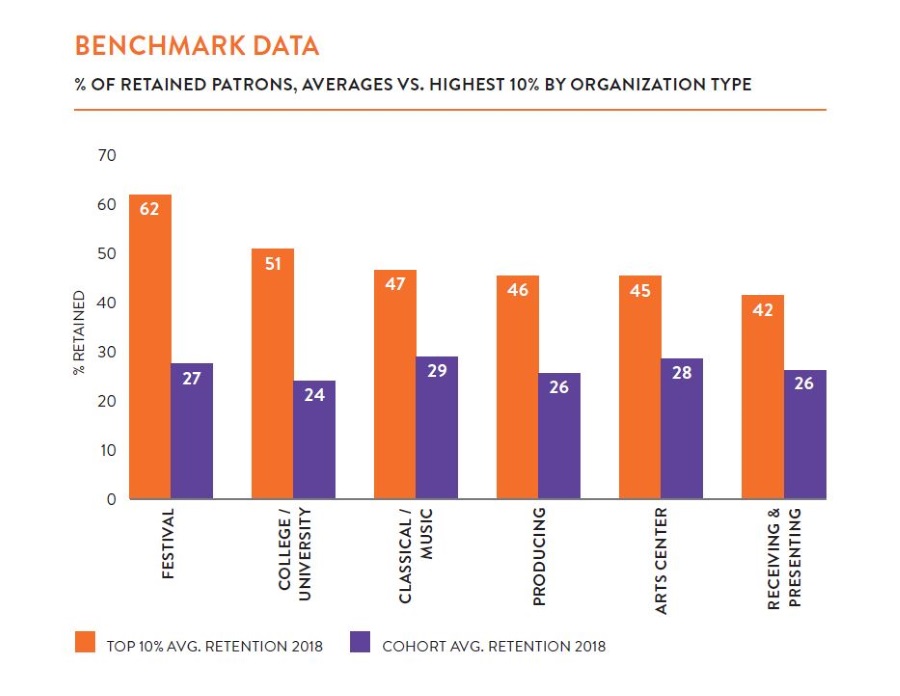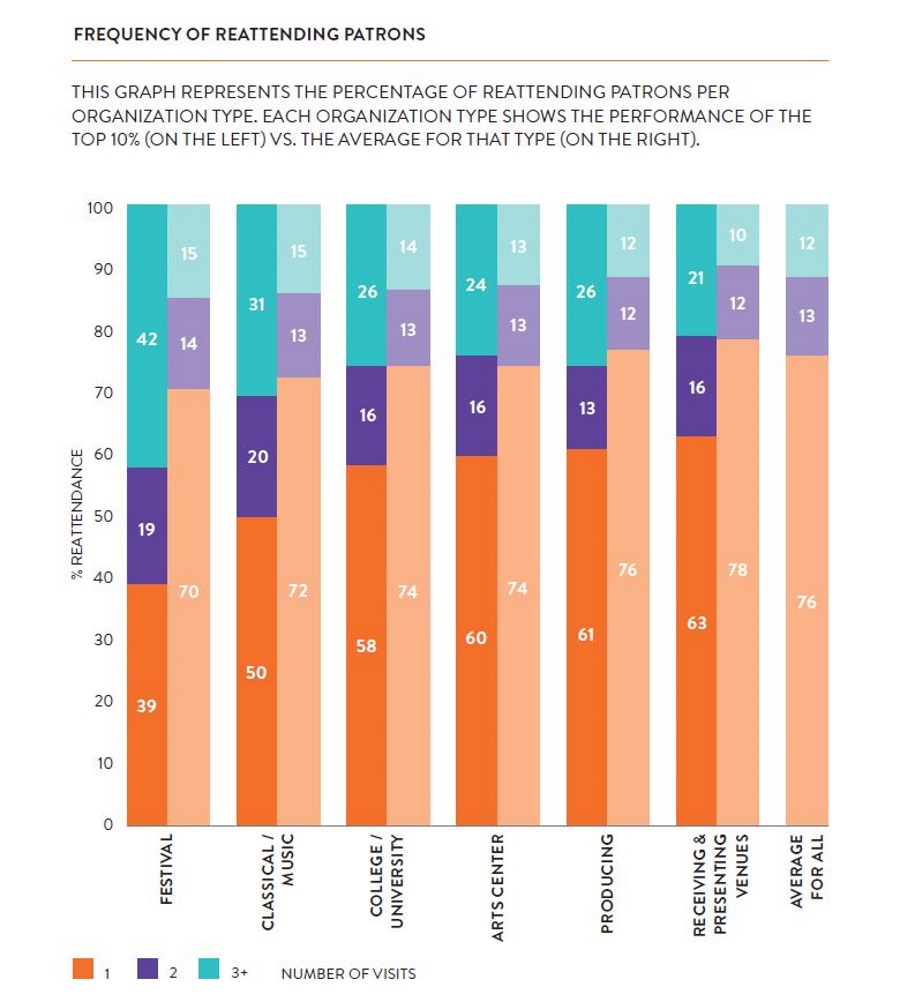The following is sponsored content.
When it comes to building loyal relationships between patrons and theatres, arts organizations in the U.S., Canada, and the U.K. have untapped potential, according to a new report from arts software provider Spektrix.
More than half of transactions recorded by performing arts organizations in 2018 were made by patrons who had never seen a show before at that same theatre, the report found. This was largely the same as earlier reports, which revealed that new buyers outnumbered frequent attendees by more than two to one.
Reaching new audiences is a crucial part of helping theatres stay competitive in a digital landscape where audiences have more entertainment options than ever. But it costs five times more to gain a new customer than to keep an existing one. Striking a renewed balance between new audience development and loyalty is a critical part of the arts budgeting and marketing process, the report suggests.
Exploring trends in organizational health at the intersection of arts administration and technology, the report found that on average, 26 percent of patrons who purchased in 2016 returned in 2018. An average of 24 percent of patrons attended more than once in 2018. In contrast, theatres performing in the report’s top 10 percent were almost twice as successful as the average.
Spektrix CEO Michael Nabarro said while arts marketing budgets tend to prioritize attracting new patrons, deepening relationships with existing ones can help theatres stay resilient even as other funding sources become more scarce.
“The finding that new buyers proportionally outnumber returning ones points to a sizable opportunity for theatres to find creative ways to encourage loyal audiences,” Nabarro said. “Luckily, for many theatres, the resources they need to do this are well within reach—they’re the relationships they’ve already started growing and the patrons who are already invested in the organization.”

Accommodating a Digital World
Ensemble Theatre Cincinnati, a high-performing organization profiled in the report, started their retention efforts when they opened in 1986 to compel patrons to return to their Over-the-Rhine neighborhood. Now they focus on developing their loyalty programs “to accommodate a digital world,” said Jocelyn Meyer, Ensemble Theatre’s Director of Marketing and Communications.
They’ve done this by developing a patron loyalty map, a visual tracker for moving audience members from ticket buyers to reattenders and then subscribers. They start the process by encouraging reattendance with generous, segmented, and timely offers to upcoming shows. They then move patrons who have attended multiple times within a given timeframe up the loyalty ladder and are now targeted as potential subscribers.
“Adding these multiple touchpoints has meant restructuring the amount of time devoted to patron loyalty, reorienting our strategy to focus more heavily on an audience that is a known commodity,” Meyer said. “This has also meant revamping our marketing budget in recent years to accommodate the associated printing, postage, and email costs. However, we’ve been able to make great strides with relatively little investment of our overall expenses, and retention is now seen as part of our holistic marketing strategy.”

Two River Theater in Red Bank, N.J., noticed that their subscriptions were declining by 3.5 percent and responded by expanding how they upsell to their single ticket buyers online. They offer patrons a ticket discount when they book three shows or more (which bumped their revenue by $33,000 in its first season), and use targeted asks to prompt patrons to add donations of about $20 to their baskets. Beyond the new revenue streams, these programs have helped Two River identify patrons to build loyalty with, said Courtney Schroeder, Two River’s director of marketing.
“Attracting new patrons takes a lot of time, effort, and money,” Schroeder said. “While all of us need to continue bringing new patrons into our theatres, we can’t forget about those we’ve already been successful in converting to attendees, in large part because these patrons are more likely to move up the loyalty ladder as multi-ticket buyers, subscribers and donors, resulting in more overall earned and contributed income for our organizations.”
Other Findings
Exploring patron transaction data from about 350 organizations using their ticketing, marketing, and fundraising CRM system, Spektrix’s 2019 Insights Report details trends in organizational health at the intersection of arts administration and technology and the strategies that healthy theatres used to get them there. Its other key findings included:
- Online transactions are six times more likely to include a donation than phone or in-person ones.
- Wheelchair-accessible seats are in demand, but only 4 percent of purchases that included wheelchair access needs happened online. This is nearly five times lower than in the U.S., where the Americans with Disabilities Act (ADA) requires organizations to offer accessible seats on all of the platforms they sell tickets on, including online.
- 60 percent of transactions in 2018 happened online and 46 percent of purchases started on mobile (but in-person or over the phone purchases were an average of 40 percent higher in value).
- Theatres that use demand-based pricing strategies to increase ticket prices as a show approaches grow their revenue by an average of 10 percent.
Founded in 2007, Spektrix provides cloud-based ticketing, marketing, and fundraising software to performing arts organizations. The company works with 400-plus arts organizations in the U.S., Canada and the U.K. Full findings from the report are available here.


